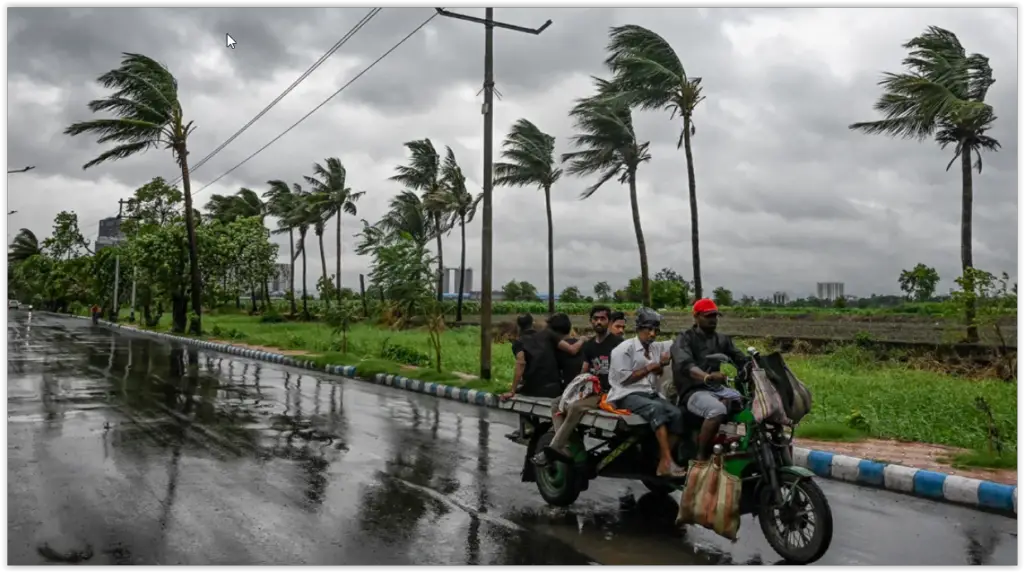At least 36 people have perished in India and Bangladesh due to Tropical Cyclone Remal, which unleashed torrential rain and powerful winds, local officials report. The cyclone claimed seven lives in West Bengal, India, seven in Telangana, 12 in Mizoram, and 10 in Bangladesh.
The Indian Meteorological Department announced that Cyclone Remal weakened into a depression over eastern Bangladesh after losing some of its intensity on Monday. Despite this, the cyclone caused widespread damage in both countries, toppling trees, flooding roads, and leaving millions without electricity.

Over 1 million people were evacuated in India and Bangladesh as the cyclone approached, with volunteers and army personnel mobilized to assist in cleanup efforts and distribute food and water to displaced families.
Cyclone Remal made landfall approximately 80 kilometers (50 miles) southeast of Kolkata, India, with gusts reaching up to 135 kilometers per hour (84 miles per hour). The storm weakened after making landfall, but it still managed to bring wind speeds of up to 115 kilometers per hour (71 mph) and expected rainfall exceeding 89 millimeters (3.5 inches). The Bay of Bengal coastlines experienced storm surges between 2.5 to 3.7 meters.
The maritime ports of Mongla and Payra in Bangladesh issued the highest alert signal, Great Danger Signal 10, advising all fishing and boating vessels to seek shelter. An estimated 2 million people in Bangladesh were affected, many living in fragile homes made from materials like clay, wood, and tin.
Dr. Md Liakath Ali, a disaster expert at BRAC, highlighted the extreme vulnerability of these communities, especially as Bangladesh ranks among the world’s most susceptible nations to climate change impacts. Power outages were widespread as authorities preemptively shut down electricity to prevent accidents, compounded by fallen trees and broken lines.
Particularly vulnerable were the stateless Rohingya communities in Cox’s Bazar, who fled persecution in Myanmar in 2017. Living in makeshift bamboo and tarpaulin shelters on hilly slopes, they faced heightened risks of landslides and floods.
In India, videos from the National Disaster Response Force showed workers clearing fallen trees in West Bengal amidst heavy rain. The Coast Guard closely monitored the cyclone’s landfall, ready with ships and hovercraft to respond to emergencies. The main international airport in Kolkata was closed, disrupting hundreds of flights.
Cyclone Remal had been gathering strength over the Bay of Bengal since late last week, prompting extensive preparation by authorities. Indian Prime Minister Narendra Modi reviewed disaster management efforts and prayed for everyone’s safety.
Cyclones, known as typhoons or hurricanes in other parts of the world, are intensifying due to the climate crisis. A study from the Shenzhen Institute of Meteorological Innovation and the Chinese University of Hong Kong, published in Frontiers in Earth Science, predicts that tropical cyclones in Asia could become twice as destructive by the century’s end.
The cyclone struck as Western and Central India were already grappling with severe heatwaves, with temperatures exceeding 45 degrees Celsius (113 Fahrenheit), causing illnesses and school closures. Climate scientists have long warned that such extreme weather events will become more frequent and intense, putting millions at risk.
The devastation caused by Cyclone Remal underscores the urgent need for robust disaster management and climate resilience strategies to protect vulnerable populations from the increasing impacts of climate change.